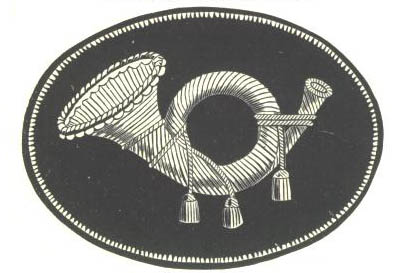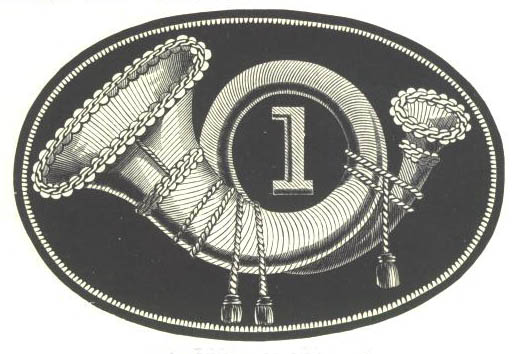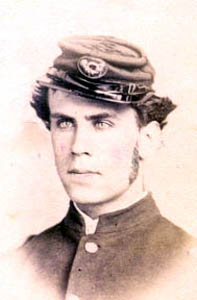Infantry Officers' Hat and Cap Insignia

Forage Cap Insignia for Infantry Officers

Jeff Davis Hat Insignia for Infantry Officers of First Regiment
Source: Schuyler, Hartley and Graham Catalog


The larger size insignia were intended for the front of the Jeff Davis hat and the smaller size ones are for the front of the forage cap (kepi). The numeral "one" within the above infantry horn indicates a regiment, having the number one. It is not possible to know from an actual insignia or photograph whether or not the regimental number is that of a regiment from particular state or from the Regular Army of the United States. Some insignia have numbers in bullion embroidery or as small silver metallic numbers added to the insignia. In other cases (as shown) the insignia were worn without any regimental number. The insignia themselves were generally made from bullion embroidery, but also were sometimes stamped brass with a false embroidery surface.
The infantry horn had its origin in Europe where it was worn by light infantry skirmishers recruited among huntsman. The English had a Rifles, the French Chasseurs and Germans Jäger troops. Americans followed European uniform styles and the hunting horn device was used on various shako plates in the early 19th Century. In 1839 an insignia very similar to the Civil War one was adopted for wear on the front of the officer's forage cap. With the evolution of headgear it was transferred to each new style until in 1875 when it was replaced with the crossed musket insignia that remains in use by infantry as a branch insignia today.

|
| Infantry Officer Wearing Chasseur Pattern Kepi with Small Horn |